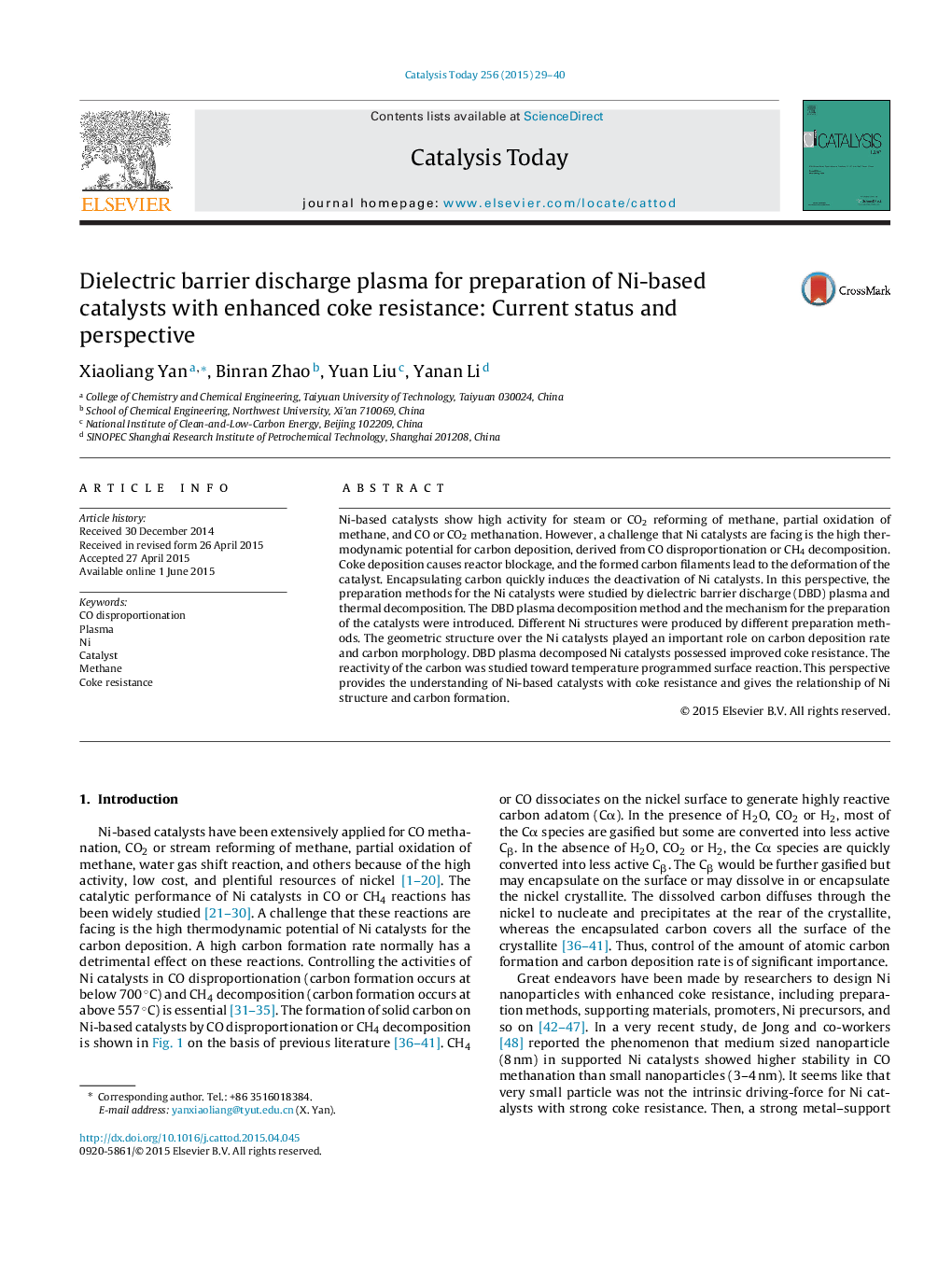| Article ID | Journal | Published Year | Pages | File Type |
|---|---|---|---|---|
| 53942 | Catalysis Today | 2015 | 12 Pages |
•Dielectric barrier discharge plasma is used to design Ni-based catalysts.•Ni structure is crucial to the catalytic decomposition rate and carbon formation.•The plasma prepared Ni catalysts showed enhanced coke resistant property.•Carbon structure is studied by temperature programmed surface reaction.
Ni-based catalysts show high activity for steam or CO2 reforming of methane, partial oxidation of methane, and CO or CO2 methanation. However, a challenge that Ni catalysts are facing is the high thermodynamic potential for carbon deposition, derived from CO disproportionation or CH4 decomposition. Coke deposition causes reactor blockage, and the formed carbon filaments lead to the deformation of the catalyst. Encapsulating carbon quickly induces the deactivation of Ni catalysts. In this perspective, the preparation methods for the Ni catalysts were studied by dielectric barrier discharge (DBD) plasma and thermal decomposition. The DBD plasma decomposition method and the mechanism for the preparation of the catalysts were introduced. Different Ni structures were produced by different preparation methods. The geometric structure over the Ni catalysts played an important role on carbon deposition rate and carbon morphology. DBD plasma decomposed Ni catalysts possessed improved coke resistance. The reactivity of the carbon was studied toward temperature programmed surface reaction. This perspective provides the understanding of Ni-based catalysts with coke resistance and gives the relationship of Ni structure and carbon formation.
Graphical abstractFigure optionsDownload full-size imageDownload high-quality image (364 K)Download as PowerPoint slide
